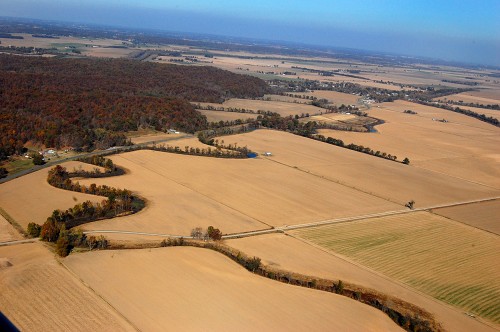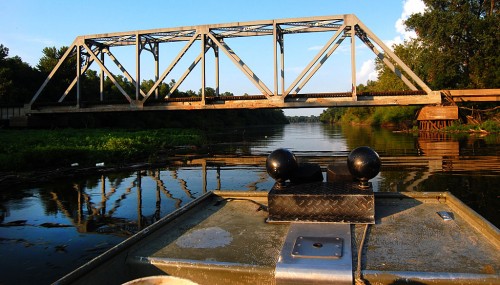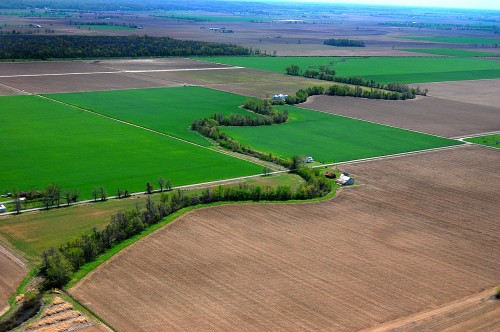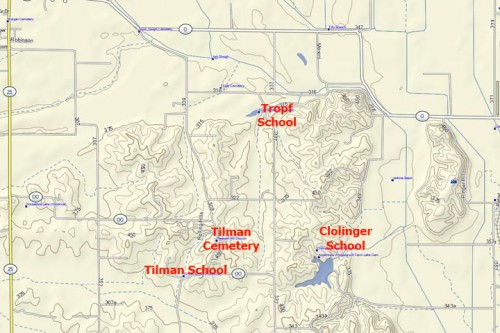 Keith Lewis had a story in The Missourian October 4 noting that work on the Little River Drainage District started 100 years ago. There was a good reason why old-timers refer to this area as Swampeast Missouri: a large portion of Southeast Missouri was nothing but nearly impenetrable swamps with names like the Dark Cypress, Old Field and Big Field.
Keith Lewis had a story in The Missourian October 4 noting that work on the Little River Drainage District started 100 years ago. There was a good reason why old-timers refer to this area as Swampeast Missouri: a large portion of Southeast Missouri was nothing but nearly impenetrable swamps with names like the Dark Cypress, Old Field and Big Field.
This aerial photo was taken south and west of Delta and shows the old Whitewater River meandering through what once would have been swamp. Dad had a job to divert the river, essentially cutting off this channel years and years ago.
Miles and miles of farmland
Once the timber was logged off and the land cleared, it turned out to be incredibly rich for farming.
Cut trees when swamp froze over
I interviewed Wife Lila’s Uncle Ray Seyer a couple of years ago when he was 89. Ray remembers growing up in the Tillman community area and hearing stories from his dad about the old days. “Pop would ride a horse – no cars in those days – from Kelso down through Delta and most of the time the water was up to the horse’s belly.”
“When they started clearing that ground there – it was all wooded area – they couldn’t cut when that water was in there.. they’d wait until it froze over, then cut it above the ice and let it float out later.”
Soft ground could swallow a tractor
Ray told some stories I had heard from old-timers back when I was a kid. I’m hoping I can run across a tape recording I made of one of Mother’s friends describing putting 12″ x 12″ “mudshoes” on horses to keep them from sinking into the “sinky” muck.
Ray and Dad both said you’d better not stop once you started across the old swamp. Ray talked about a couple of guys who used to haul limestone out of there. Their Caterpillar-type tractor stalled out at the end of the workday and wouldn’t start. They decided to leave it until the morning. The next day, only two smokestacks were visible above the muck, he said.
Diversion Channel
 The Big Ditch is one of the main ways to move water out of the basin into the Mississippi River. Here are some of the stories I’ve done about the Diversion Channel.
The Big Ditch is one of the main ways to move water out of the basin into the Mississippi River. Here are some of the stories I’ve done about the Diversion Channel.
- Trotline Fishing at the mouth of the Diversion Channel
- A scenic ride down the Diversion Channel
- Allenville railroad bridge over the Diversion Channel
- Diversion Channel fish feeling the heat
- Mississippi River backs up into Diversion Channel
- Lester Harris swings over Big Ditch
- Dam pits neighbor against neighbor


